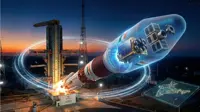UCSD researchers receive NSF award to support data-intensive applications for advanced networks
By By Tiffany Fox | 30 Jul 2010
Researchers at the University of California, San Diego (UCSD), the University of Illinois at Chicago, and Northwestern University have received a 3-year grant from the National Science Foundation (NSF) to encourage and enhance digital communication and collaboration between the U.S. and international science and engineering research and education communities. The award was announced at the GENI Engineering Conference, which showcased the NSF-funded research being conducted under the Global Environment for Network Innovations program.
 |
| Members of CineGrid interactively edit sound and video over distance from Northern to Southern California. IRNC Translight/Starlight will assist in propagating this technology worldwide. |
The project, known as International Research Network Connections (IRNC) TransLight/StarLight, will enable multi-national collaborations by integrating high-performance networks with advanced data-intensive applications so that scientists and engineers can communicate with colleagues while simultaneously conducting major research projects. Researchers will, for example, be able to share data from instruments, sensors, high-definition cameras, data storage and computational resources located throughout the world.
''The concept behind the IRNC is to engage people across the planet, to allow people with aggressive or advanced networking needs to interconnect,'' says Thomas DeFanti, principal investigator for the project and a research scientist with the UC San Diego division of the California Institute for Telecommunications and Information Technology (Calit2). ''Multi-gigabit optical networks are available for most countries with economies robust enough to support scientific research. The issue now is how one best utilizes that bandwidth by increasing the richness of how individual researchers connect to the links. We can do this by developing networking capabilities that – unlike email or sending files by attachment – optimize the use of available bandwidth speeds.''
Leading the TransLight/StarLight experimental networking effort are DeFanti and co-principal investigators Maxine Brown of the Electronic Visualization Laboratory, University of Illinois at Chicago; Joe Mambretti of the International Center for Advanced Internet Research, Northwestern University; and Tajana Rosing of UCSD's Computer Science and Engineering Department.
 |
| Calit2's Dr. Peter Arzberger, principal investigator for the Pacific Rim Application and Grid Middleware Assembly (PRAGMA), collaborates with Dr. Jun Murai of Keio University using IRBC networks. |
DeFanti, Brown and Mambretti have over 15 years of NSF-funded experience in developing both the large-scale applications and the cyberinfrastructure for bandwidth-hungry applications. One example is StarLight, an advanced national/international open communications exchange facility in Chicago that supports grid-intensive e-Science applications, network performance measurement and analysis, and computing and networking technology innovation. UCSD and many other universities nationally and globally link to StarLight with 10 gigabit/second networks, and 100 gigabit/second network trials are in the planning stages.
Together, the PIs will continue to build cooperative partnerships and serve the users of advanced networking in the Global Lambda Integrated Facility, the National LambdaRail and Internet2 by sharing best practices, creating new services with industrial and government partners, and creating new opportunities for NSF Research Experiences for Undergraduates (REU).




















